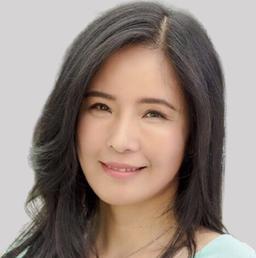Some acupoints shine when there’s a crisis—think sudden neck spasm or a sharp pain in the chest—while others excel at long-term upkeep. Crooked Wall (Qu Yuan, SI 13) belongs to the latter group. While clinicians may categorize it as a supporting acupoint, many traditional Chinese medicine (TCM) enthusiasts consider it an essential part of their self-care toolkit, much like chicken soup is for a cold. The healing powers of Qu Yuan can be combined with routine maintenance for long-term wellness.
Ancient Roots, Modern Insight
First described in the foundational text “Zhen Jiu Jia Yi Jing” (“A-B Classic of Acupuncture and Moxibustion”) nearly two millennia ago, Qu Yuan carries two mandates: “relax the tendons” and “unblock the meridians.” Loosening tendons in TCM roughly translates to boosting local blood flow and restoring easy movement—the same looseness you feel after a good massage. Unblocking meridians (energy pathways), meanwhile, treats the body like a highway system—when energetic traffic jams, tissues upstream and downstream both suffer. Regular stimulation of Qu Yuan acts like routine road maintenance, preventing jams before they trigger chronic pain.People with lingering pain around the scapula, slow-to-heal rotator-cuff issues, or shoulder joints that grumble in damp weather can gain noticeable benefits by stimulating Qu Yuan. Because blockages accumulate over months, this acupoint isn’t a one-and-done miracle—it rewards consistency. Practitioners notice improved overhead reach, less stiffness, and calmer soft-tissue inflammation along the upper back after a few weeks of daily work.
A New Look at Ancient Practices
Recent studies highlight the effectiveness of TCM techniques. One significant study compared the effects of kinematic-acupuncture combined with rehabilitation to conventional acupuncture paired with rehab for patients dealing with post-stroke spastic paralysis. The results were compelling: While both groups showed improvement in motor function, muscle tone, and daily living abilities, those treated with kinematic-acupuncture demonstrated consistently superior outcomes. This underscores the potential benefits of TCM methods in contemporary treatment and also suggests these practices can enhance rehabilitation efforts after stroke.Another study that explored the patterns of jingjin (sinew/fascia) lesions in patients with cervical spondylosis provided further insights. By mapping lesions with TCM meridian diagnostics, researchers identified specific anatomical targets, including Qu Yuan, that are most affected, highlighting its crucial role in upper body function.
How to Locate and Stimulate Qu Yuan
Stand tall and let one arm dangle. Slide your opposite hand up the back crease of the armpit until fingers bump a bony ridge—the rear corner of the shoulder socket. Now set your other hand on the big neck bump (C-7) and count two spinous processes down to T-2. Draw an imaginary horizontal line from T-2 toward that first ridge—halfway along, you’ll land in a tender dip. That midpoint is Qu Yuan, and the soreness or tenderness you feel confirms the spot.Stimulating Qu Yuan
- Pressure: Press firmly for three to five seconds, ease off for three seconds, and repeat for up to three minutes per side.
- Massage: Using your thumb, slowly massage in a circular motion for one to three minutes on each side.
- Herbal patch: Apply an herbal patch overnight for extended effect.
Precautions
Avoid manual stimulation if the area is bruised or recently injured. If you have sensitive skin, it’s best to choose patches made from natural ingredients. Harsh synthetic materials can counteract the benefits of soothing therapy.Beyond Emergency Pain Management
Chronic pain can overshadow life’s brightest moments, yet we often view it as a natural part of aging. However, ancient physicians did not accept the decline of physical abilities as inevitable. Based on their observations, they developed accessible techniques to maintain flexible joints well into old age.By consistently stimulating Qu Yuan for several weeks, you can monitor how your shoulders and upper back feel and observe small improvements that accumulate into significant progress. While preventive care may not seem dramatic at first, it is often far more effective than emergency measures.
TCM expert Shihhsiang Hung reviewed this article for accuracy and clarity.







